This guide explains how to use built-in Windows tools to cast (mirror) the screen of an Android smartphone to a PC over a Wi-Fi network. To project (cast) the screen of an Android device, you can use Miracast wireless transmission technology, which is supported by most modern computers.
The following requirements must be met to mirror the screen and audio from an Android device to a Windows computer:
- Both devices must be connected to the same Wi-Fi network (access point).
- A computer running Windows 10 or 11 with the Wireless display option feature installed.
- Miracast-enabled Wi-Fi adapter.
First, check that your Windows computer supports Miracast video streaming. Open a command prompt and run:
netsh wlan show driver
The following line indicates that the Wi-Fi adapter supports Miracast mode:
Wireless Display Supported: Yes (Graphics Driver: Yes, Wi-Fi Driver: Yes)
The Wi-Fi adapter must have a driver that supports at least version 6.3 of the NDIS specification:
NetAdapter | Select Name, NdisVersion
Then install the Wireless Display capability from Settings -> Optional Features -> Add a feature.
Or install an additional component using PowerShell. Check that the WirelessDiplay.Connect feature is installed:
Get-WindowsCapability -Online -name *wireless*
Allows other devices to wirelessly project to this computer. Requires Miracast-capable hardware.
If it is not present, run the installation with the command:
Add-WindowsCapability -Name App.WirelessDisplay.Connect~~~~0.0.1.0 -Online
Windows will download and install the required component files from Microsoft’s servers (an Internet connection is required).
Then enable Miracast in Settings ( Win+I )-> System -> Projecting to this PC. By default, Windows doesn’t allow Miracast to be received. Select the ‘Available everywhere on secure networks‘ option, which allows you to receive Miracast traffic for private and domain network profile types (locations).
This creates a separate Microsoft Wi-Fi Direct Virtual Adapter virtual adapter that is used to receive Miracast streams.
If Miracast is not supported, or if your computer is not connected to a Wi-Fi network, a message will be displayed:
This device doesn’t support receiving Miracast, so you can’t project to it wirelessly.
Then enable screencasting on your Android smartphone. Go to Settings -> Connection and sharing -> Cast (Cast screen contents to an external display) -> Turn on.
Using a broadcast packet, Android should discover and list Miracast-enabled devices on the Wi-Fi network. Select your Windows computer from the list.
Accept the incoming Miracast connection on a Windows PC.
A window will open on your computer, mirroring the screen and sounds from your Android device with a slight delay. You can view pictures, games, or videos played on your smartphone. The user can only see the screen of the smartphone, but cannot control it with a mouse and keyboard.
In the next post, we’ll look at how to configure a full remote control of an Android smartphone from a Windows computer over a local network.




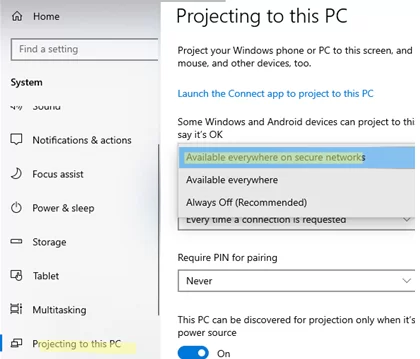

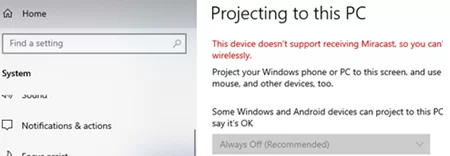
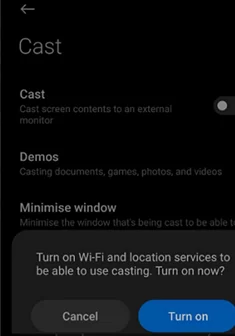
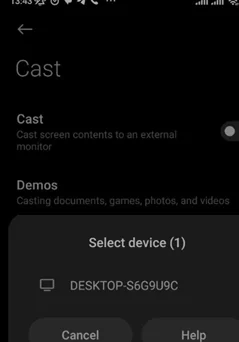
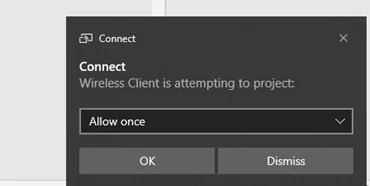
1 comment
“NetAdapter | Select Name, NdisVersion” doesn’t work from a command prompt, only a Powershell prompt